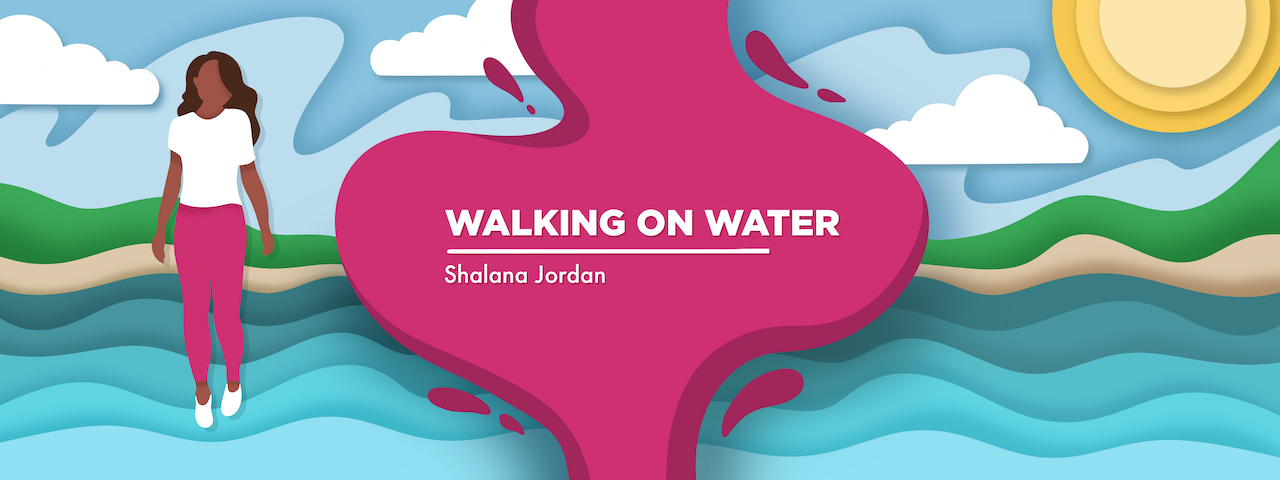Being rare isn’t the same as being lonely
I may be one of the very few, but I'm also part of a caring community
Written by |

“You’re dying.”
That was my introduction to atypical hemolytic uremic syndrome (aHUS), and I’d never heard of it. On that day, my whole world turned upside down.
In September 2020, I was at the top of my game. As an active single mom in a new city, I’d purchased my first home, which I was remodeling completely alone. I’d started a job making more money then I’d ever made. And I’d just lost 110 pounds and begun dating again after a rough divorce years before.
But by mid-September, I was dying in the intensive care unit with multiorgan failure. I hadn’t felt 100% for months, not since I’d had an asymptomatic bout of COVID-19 a few months before, in April. Because I didn’t have any typical COVID-19 symptoms, I brushed off my seemingly unrelated symptoms, figuring I’d just been overdoing it.
But when I finally went to the emergency room, I was admitted for nearly two months. It took over a month of that to get a proper diagnosis. My medical team kept me alive, if barely, with 18 blood transfusions, dialysis, plasmapheresis, and nonstop testing while they rifled through medical journals hunting for a possible answer.
Then I received my aHUS diagnosis. I could barely pronounce the full name. I sat in my ICU bed late at night scouring the internet for information, but Google didn’t yield much that helped me; there was so much medical jargon that I had trouble finding any information of value.
About 60% of cases can be caused by a gene mutation, but the other 40% aren’t linked to mutations at all. And if the aHUS is linked to mutations, there are at least 10 genes where they’ve been found, and even then there’s usually a triggering event. I had trouble comprehending that, but aHUS is out of the norm and can have varied causes or triggers — or, in idiopathic cases, no known cause at all.
A context for my rarity
In the United States, there’s typically one case for every half-million people. That didn’t sound ultrarare to me. But then I saw that globally, only around 20,000 people have aHUS — 20,000 out of almost 8 billion people. OK, that sounded rare.
I also have a thrombomodulin mutation, which is the cause in about 5% of all cases. Leave it up to me to be one of the rarest among the rare. But these statistics helped put my disease into perspective.
One of my nephrologists said something that helped me understand more.
“You’ve heard of dissociative identity disorder, right?” my nephrologist said, referring to what used to be called multiple personality disorder. “Treating a patient with aHUS is like having a patient with multiple personalities. It’s a disease we’ve all heard about, we all learned about, but most doctors will never treat it or even see it in their career.”
Those words have echoed in my head as if they were in a void that went far beyond my perception. Those words rang even more true in the ICU, where I met dozens of medical students each day. I was being treated in a teaching hospital, so students were brought by daily to meet me and look at my lab work.
I was potentially the rarest patient they’d ever see, and they met me at the start of their career. I was happy to oblige their visits, as being hospitalized during the height of COVID-19 was lonely.
Finding my rare community
At night, when the ward was quiet and all I heard was the beeping of heart monitors, I turned to social media in my search for resources. To my surprise, I found several aHUS support groups. I stayed up nightly reading years of posts and interactions. I was learning more from this small community of people than I’d learned from a team of more than 25 doctors.
There were people in these groups who had stories almost identical to mine. They had pain like mine, complications like mine, and upside-down lives like mine. The connections I’ve since made in the aHUS and rare disease world are refreshing.
I thought that becoming medically rare was going to separate me from the rest of world. But I’ve gained a new voice and community from this ordeal. I now write about living with aHUS for this website, and I interact with several Facebook support groups. I never felt I belonged until now, but today I feel understood, supported, and valued. And I’m meeting people who don’t expect or demand anything of me except to be authentically me.
I almost didn’t survive this journey, and I still struggle daily. But it brought me to this best version of myself.
The value of bridging the gap between feeling alone with a rare disease and having the knowledge and support of an entire community is immeasurable. And contributing to something much bigger than myself is extraordinary. On this Rare Disease Day, I know that being rare doesn’t mean being alone.
Note: aHUS News is strictly a news and information website about the disease. It does not provide medical advice, diagnosis, or treatment. This content is not intended to be a substitute for professional medical advice, diagnosis, or treatment. Always seek the advice of your physician or other qualified health provider with any questions you may have regarding a medical condition. Never disregard professional medical advice or delay in seeking it because of something you have read on this website. The opinions expressed in this column are not those of aHUS News or its parent company, Bionews, and are intended to spark discussion about issues pertaining to aHUS.






Leave a comment
Fill in the required fields to post. Your email address will not be published.